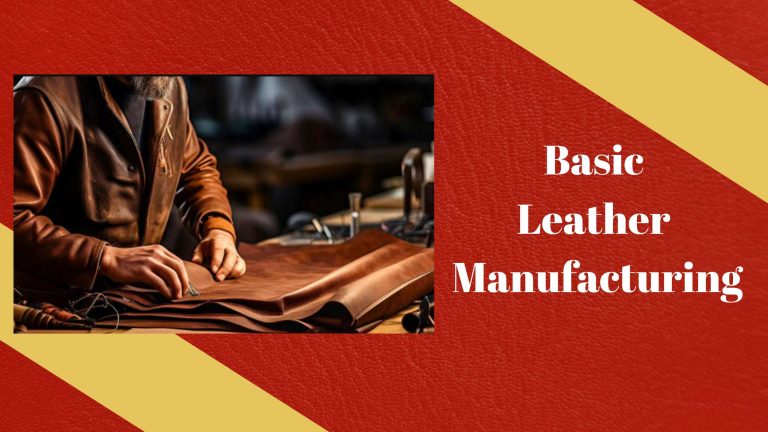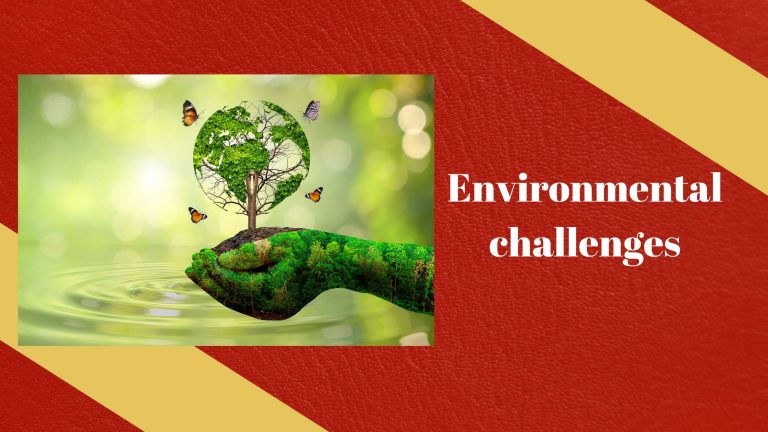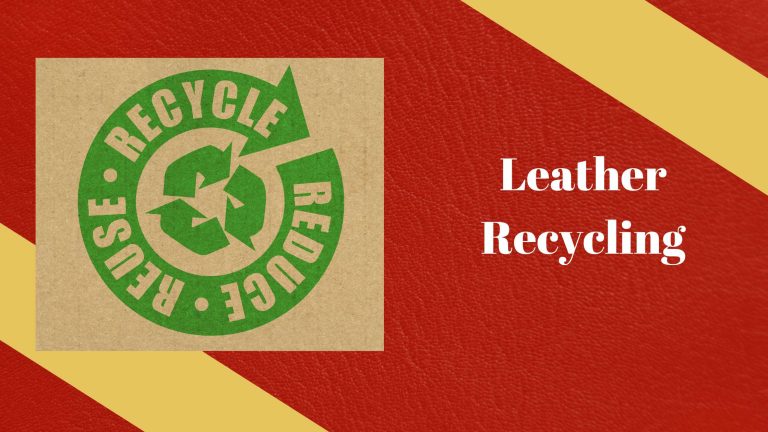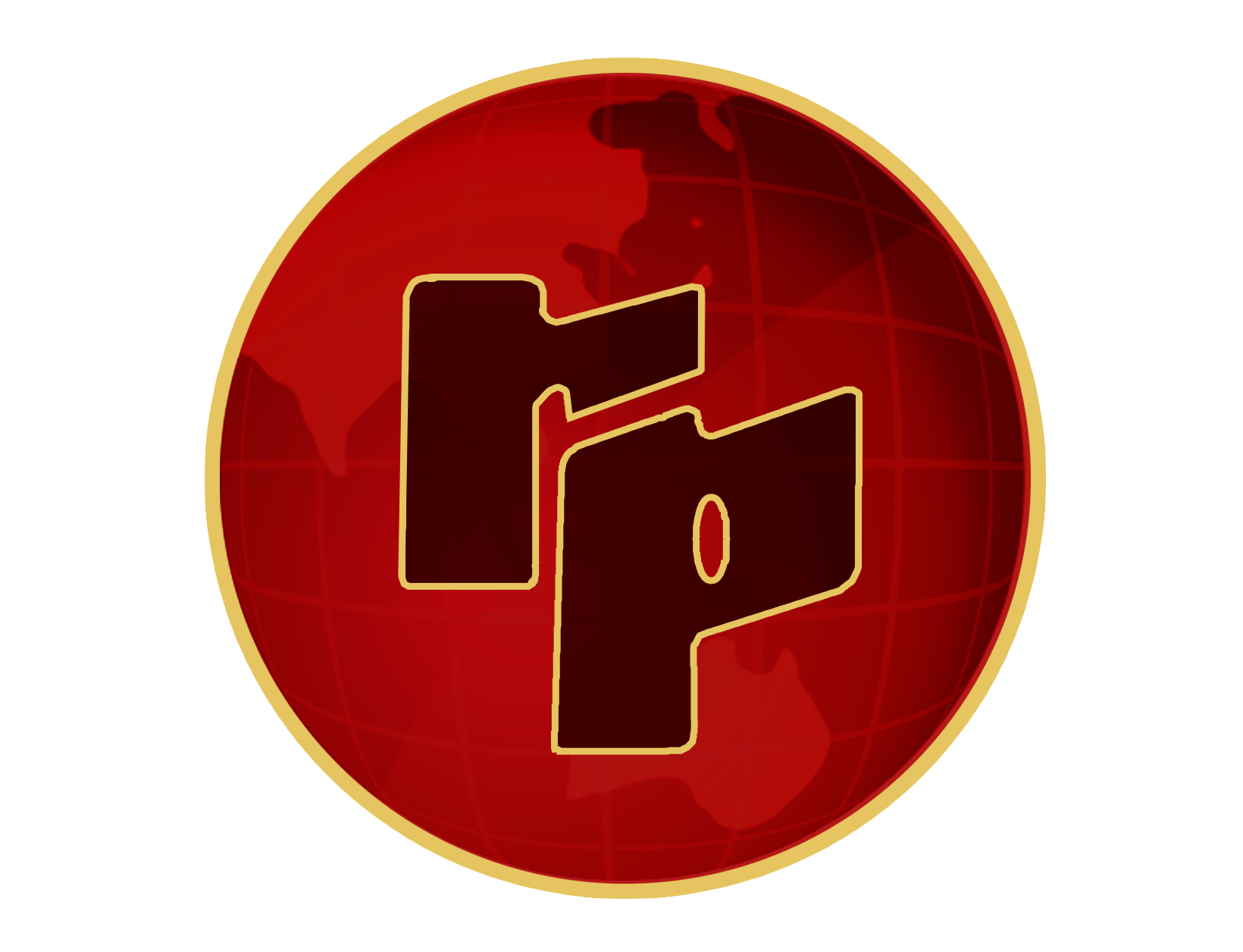The leather industry has a significant role to play as it supplies leather to different industries like fashion, automobiles, and furniture, where they produce a variety of products using leather as a raw material.
As leather is extracted from animals, it goes through various processes before it is ready to be used to make finished goods. The leather manufacturing process produces plenty of waste as a huge amount of water goes into the tanning process. That’s why sustainability is important.
Natural resources are in limited quantity, making it necessary to practice sustainability, as it will not only help the present generation to use them in the right quantity but also preserve them for future generations. Also, sustainability matters because our day-to-day activities damage the environment and the society we are living in. That’s why we need to practice sustainability in every aspect of our lives to make our planet a better place not only for current and future generations but also for plants and animals as well.
The purpose of this blog is to walk you through leather manufacturing and why its recycling is important, in case you are working in the leather industry. We will also share the benefits of recycling, the types of leather waste that can be recycled, and the different methods of recycling the leather. Lastly, we will share the challenges you can face while recycling leather and the solutions to cope with each challenge.

Understanding Leather Manufacturing
Leather manufacturing is a process where the leather manufacturer extracts the raw material from different animals and converts it into finished goods. Leather manufacturing is a time-consuming process as it goes through preparatory stages (soaking, fleshing, liming), tanning, and crusting before it is ready to be used by different industries for producing finished goods.
Chemicals Used in Leather Production
Once the producer gets the hides and skins, they use different chemicals at each stage to protect the raw material from getting damaged. Let’s discuss the common chemicals used:
1) Preparation (Pre-Tanning)
- Soaking: Water or mild detergents are used to soak hides to rehydrate and remove dirt and blood.
- Liming: Hides are treated with lime (calcium hydroxide) to loosen hair and remove fats.
- Dehairing: Sodium sulfide is used in removing the hair from the hides.
- Fleshing: Lime or other mild chemicals are used for the removal of flesh and fat from the hides.
2) Tanning
- Chrome Tanning: In chrome tanning, hides are treated with chromium salts, usually chromium (III) sulfate, to make the leather durable and resistant to water and heat.
- Vegetable Tanning: In vegetable tanning, tannins are sourced from plants (oak, bark, chestnut) to tan the leather.
- Aldehyde Tanning: This tanning process uses chemicals like aldehydes like formaldehyde or glutaraldehyde for tanning.
3) Post-Tanning
- Neutralization: Acids (like sulfuric acid) or bases (like sodium carbonate) are used on tanned hides and are neutralized to balance the pH.
- Dyeing: Synthetic dyes or pigments, which may include heavy metals or other colorants. Are used to dye leather to achieve the desired color.
- Fatliquoring: Leather is treated with oils and fats to make it supple and flexible.
4) Finishing
- Coating: Various resins, polymers, and topcoats are applied to leather to protect and enhance its appearance.
- Drying and Conditioning: Final treatments are done where various conditioning agents or preservatives are used to stabilize the leather and prepare it for use.

Environmental challenges associated with leather manufacturing
Leather manufacturing is a complex process as it consumes huge amounts of water, energy, and chemicals at every process before the leather is ready to use. Due to the large amount of consumption of natural resources, the leather manufacturing industry has a huge impact on the environment.
1. Water Consumption –
The tanning process consumes a large amount of water from the locality where the leather manufacturing business is operating. This can lead to a shortage of water in society. Also, the tanning process produces waste water, which is dumped in the bodies of water. This practice pollutes the water bodies.
2. Chemicals –
Different chemicals, like chromium salts, sodium sulfide, and dyes, are used throughout the leather manufacturing process. These chemicals then get mixed with water or air, making them toxic for humans, animals, plants, and the environment.
3. Deforestation –
For the vegetable tanning process, the tannins are sourced from plants like oak, bark, and chestnut. This causes deforestation as the trees are cut down to meet the demand for tannins.

Recycling in Leather Manufacturing
In leather manufacturing, the waste materials are collected and reused to create new products instead of throwing them as scraps. This process of collection and creation of new products from waste material is called recycling.
Benefits of Recycling in Leather Manufacturing
Recycling in leather manufacturing has several benefits. Let’s discuss each of them.
1. Reduction in Waste Generation:
The waste generated from leather can be in different forms. This includes scraps, dust, and shavings. As the leather waste is dumped in landfills. So, when the leather waste is recycled, it reduces the demand for fresh raw materials to produce leather products that can be made from leather scraps.
2. Conservation of Resources:
The one benefit of recycling leather is that it preserves the natural resources. It is because the recycled leather has already passed through all the processes, from preparation to tanning and dyeing. So, it doesn’t require you to perform steps again. This in terms saves natural resources like water and raw materials.
3. Economic Benefits:
Recycled leather gives economic benefits to leather manufacturers as they can create new products from the recycled leather, which reduces their dependency on fresh raw materials. This in turn reduces their cost of purchasing and production, and it also saves their time.
4. Environmental Impact:
When the leather manufacturing industry adopts the recycling process over picking fresh raw materials to create leather, they are making a difference in the society they are working in. It is because they are contributing to saving water and reducing pollution, deforestation, and carbon footprints. These practices have long-term sustainable benefits as they protect the environment and save natural resources for future generations.
Types of Leather Waste that Can Be Recycled
There are generally 3 types of waste that are generated during the leather marking process. These are leather scraps, leather shavings, and leather dust.
1. Leather Scraps –
Leather scraps are large pieces of leather waste that are generated from defective sections of the leather or from cutting patterns. The collected leather is shredded and combined with adhesives to create new leather sheets. These recycled leathers are often used in small fashion accessories or home décor items.
2. Leather Shavings –
Leather shavings are smaller in size compared to leather scraps. They are in the form of dust particles that are produced during the trimming or finishing stages of the leather. These recycled leathers are grounded into fine powder and are used to produce bonded leather. They are also used as filler materials.
3. Leather Dust –
Leather dust is the smallest in size and is produced during sanding or grinding leather. These recycled leathers are mixed with adhesives or resins to manufacture bonded leather.
Methods of Recycling Leather Waste
As you now know much about leather recycling. Let’s see the different methods of recycling waste generated during the leather-making process:
1. Mechanical Recycling:
Mechanical recycling involves physically processing leather waste to create new products or materials. This method typically includes shredding the leather into small pieces or fibers, which are then ground into a fine powder. This powder can be mixed with adhesives and other materials to form bonded leather or composite products, such as book covers, upholstery, and various accessories. Mechanical recycling is efficient for handling large volumes of leather waste and can help extend the lifecycle of leather materials by repurposing them into useful items.
2. Chemical Recycling:
Chemical recycling focuses on breaking down leather waste using chemical processes to recover useful components or transform the waste into new materials. This method often involves the use of solvents or other chemicals to decompose the leather into its fundamental components, such as collagen. The resulting substances can then be used to produce new leather or leather-like materials. Chemical recycling can be effective in handling complex or heavily treated leather waste, offering a way to recycle materials that might otherwise be difficult to process through mechanical means.
3. Upscaling:
Upscaling, or upcycling, is a method that repurposes leather waste into new, higher-value products. This approach involves creatively using scraps, shavings, or even used leather items to create unique, custom products such as fashion accessories, home decor, or artistic items. Upscaling leverages the inherent qualities of leather, such as durability and aesthetic appeal, to give waste materials a new life. This method not only helps reduce waste but also promotes sustainable fashion and design by transforming discarded leather into desirable, functional items.

Innovations and technologies in leather waste recycling
Biodegradable Leather Composites:
Recent innovations focus on creating biodegradable leather composites from waste materials. By combining leather shavings, dust, and other waste with biodegradable polymers or natural fibers, researchers are developing new materials that can decompose naturally at the end of their life cycle. These composites aim to reduce the environmental impact of leather waste and offer a sustainable alternative to conventional leather products.
Enzyme-Based Recycling:
Enzyme-based recycling technologies use specific enzymes to break down leather waste into its basic components. Enzymes can target and decompose collagen and other proteins found in leather, making it easier to recycle and repurpose the materials. This method is considered more sustainable because it reduces the need for harsh chemicals and can be tailored to handle various types of leather waste.
Leather Waste-to-Fuel Technologies:
Some technologies are designed to convert leather waste into renewable energy. Through processes like pyrolysis or gasification, leather waste can be transformed into biofuels, such as bio-oil or syngas, which can be used for energy production. These methods not only reduce the volume of waste but also provide a valuable energy source, contributing to a more circular economy.

Challenges and Solutions in Leather Recycling
Here are some of the common challenges faced in recycling leather waste and their solutions:
Challenges – Complex Composition of Leather
As animal hides and skin are the raw material of leather, it has animal fat and collagen present in it. Also, leather passes various processes where they come in contact with chemicals, acids, and dyes. This complex composition of leather makes it a challenging task to break down and repurpose.
Solution – Advanced Recycling Technologies
Advanced recycling technology like hydrothermal processing and enzyme-based methods have been developed to break leather into different components like fats, collagen, and protein. This process makes it easier to recycle leather.
Challenges – Quality Degradation
The recycled leather is made from the scraps of genuine leather. These recycled leathers are mixed with chemicals and adhesives which reduces its durability. Thus, the products made from recycled leather have low quality compared to the products made from virgin leather.Bottom of Form
Solution – Improving Quality Control
Innovations such as better bonding techniques and the development of high-quality composite materials can mitigate quality degradation and help maintain the durability and appearance of recycled leather.
Challenges – Collection and Sorting
When leather waste is collected in bulk, it may contain other waste materials. Effective collecting and sorting of leather can be a challenging process because it is labor-intensive and can hinder the quality of recycled leather.
Solution – Efficient Collection and Sorting Systems
Advanced technologies have been developed that automate the collecting and sorting process of the leather. This automated sorting system is effective because it uses sensors, robotics, and artificial intelligence to identify and separate leather waste more accurately and quickly.
Challenges – Economic Viability
The economic viability of leather recycling can be challenging due to high processing costs and limited market demand for recycled leather products. This can make it difficult for recycling operations to be financially sustainable.
Solution – Economic Incentives
Various economic incentives and support mechanisms can be implemented to address economic challenges. Governments and organizations can provide subsidies, grants, or tax incentives to encourage investment in recycling technologies and infrastructure.
The Bottom Line
Recycling is a necessity in the leather manufacturing industry to reduce waste, conserve resources, and minimize environmental impacts. The manufacturers can recycle leather waste through mechanical, chemical, and upscaling recycling methods to mitigate pollution and preserve natural resources. Manufacturers and consumers are encouraged to support these recycling initiatives to protect the environment and make it a living place for every being.
